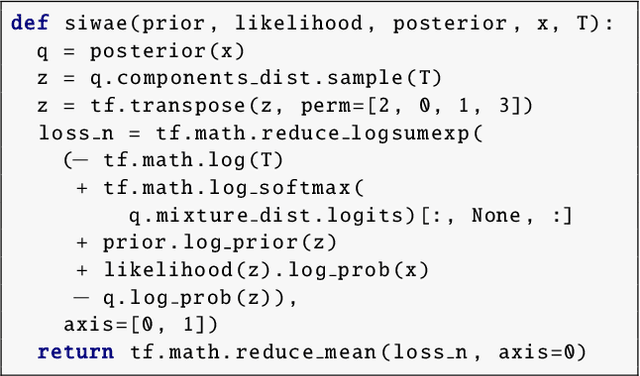Automatic Differentiation Variational Inference with Mixtures
Paper and Code
Mar 05, 2020



Automatic Differentiation Variational Inference (ADVI) is a useful tool for efficiently learning probabilistic models in machine learning. Generally approximate posteriors learned by ADVI are forced to be unimodal in order to facilitate use of the reparameterization trick. In this paper, we show how stratified sampling may be used to enable mixture distributions as the approximate posterior, and derive a new lower bound on the evidence analogous to the importance weighted autoencoder (IWAE). We show that this "SIWAE" is a tighter bound than both IWAE and the traditional ELBO, both of which are special instances of this bound. We verify empirically that the traditional ELBO objective disfavors the presence of multimodal posterior distributions and may therefore not be able to fully capture structure in the latent space. Our experiments show that using the SIWAE objective allows the encoder to learn more complex distributions which regularly contain multimodality, resulting in higher accuracy and better calibration in the presence of incomplete, limited, or corrupted data.
 Add to Chrome
Add to Chrome Add to Firefox
Add to Firefox Add to Edge
Add to Edge